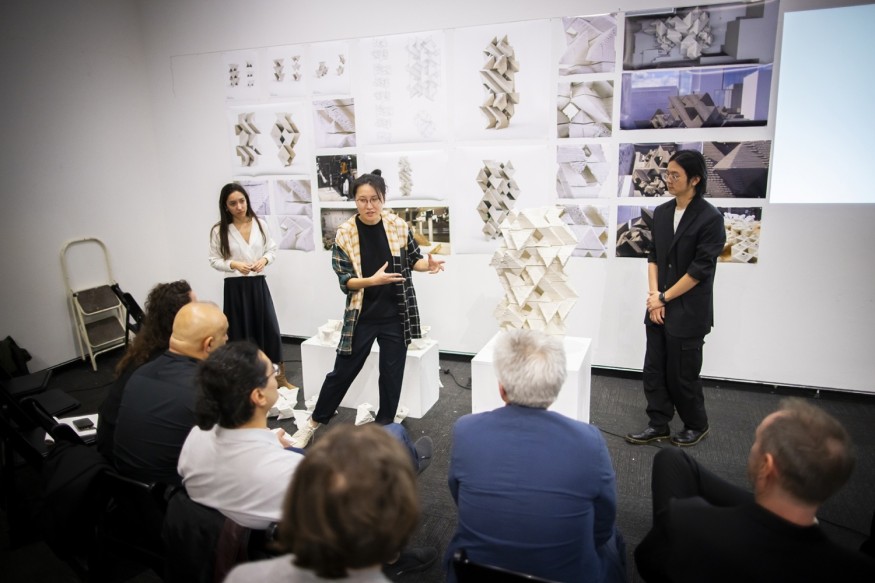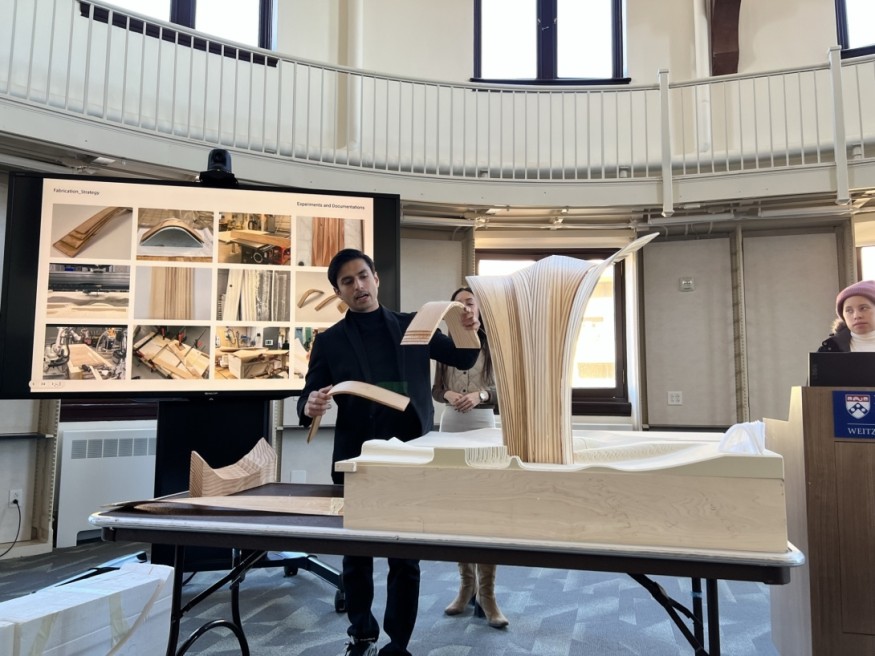Students Pioneer Sustainable Architecture With Ancient Materials and AI Robotics at the University of Pennsylvania

A group of University of Pennsylvania Master of Science in Design students with a concentration in Robotics and Autonomous Systems (MSD-RAS) is pushing the envelope in the dynamic field of architectural innovation by fusing cutting-edge robotics and artificial intelligence with historic building materials. This innovative strategy promises a future of intelligent, sustainable, and adaptable architecture in addition to upending conventional building practices.
Ancient Clay, Modern Designs
In the heart of the university's Robotics Lab, students explore the possibilities of clay, one of the oldest building materials known to humanity. Equipped with six-axis industrial robots, commonly seen on car manufacturing floors, and 3D modeling software, these students set out to redefine the possibilities of ceramic bricks. They can't intricate patterns layer by layer by fusing robotics and computational design, creating structures that withstand the brittleness directly connected to ceramics.
The Intersection of Tradition and Innovation
Even though clay has been used for building for thousands of years, the combination of robotics and artificial intelligence has transformed its application. The Robotics Lab at Meyerson Hall, which houses this innovative approach, places the University of Pennsylvania at the forefront of architectural design research. The two-semester MSD-RAS program prepares students for a new era of innovation in manufacturing and design by teaching them about robotics, artificial intelligence, and automated systems.
Bridging Past and Present
The journey begins with the Fused Polyhedra studio, where students recreate and print existing models by the late Philadelphia artist Robinson Fredenthal. Inspired by Fredenthal's polyhedral geometry, the students leverage computational design and robotic fabrication to expand on these geometries, transforming them into multi-tiered structures. The challenge lies in the design phase and the hands-on process of working with clay - a departure from traditional architectural pedagogy.
Also Read : Shindagha Corridor's Prefabricated Mid-Air Bridge Construction in Dubai's Urban Tapestry

Clay as a Canvas
Drawing inspiration from Fredenthal's extensive collection in Penn's Architectural Archives, students delve into the largely untapped source of inspiration. Robotic fabrication has now translated what were once cardboard study models into tangible clay structures. The unique 60-degree incline of tetrahedral and octahedral shapes, impossible without external supports, showcases the potential of marrying ancient materiality with modern technology.
Functionally Grading Timber
Transitioning to the second half of the semester, students explore the use of wood in robotic fabrication. Led by Professor Alicia Nahmad Vasquez, the studio focuses on "functionally grading" timber - a technique that involves creating layers of different wood species. This sustainable approach aims to reduce waste by stacking layers before milling, allowing for a more precise and efficient use of raw materials.
Shaping the Future of Architecture
The MSD-RAS program at the University of Pennsylvania is not just about designing structures; it's about redefining the relationship between architects and the manufacturing process. By combining creativity with an in-depth understanding of robotic production processes, the program empowers architects to realize novel designs cost-effectively. The ultimate objective is to bring artisanship back into manufacturing to make custom production more affordable, accessible, and ecologically friendly.
Within the broader context of the Fourth Industrial Revolution, the Penn program aligns with the revolutionary shift in manufacturing. Robotics and artificial intelligence combined enable customized manufacturing on a par with mass production. As a result, architectural design has never seen such a high degree of innovation, accessibility, and efficiency.
Building a Legacy of Innovation
As the MSD-RAS program continues to evolve, recent graduates are already making waves in the professional realm. Their research in dynamic robotic slip-casting and die-cast extrusion ceramics presented at the Association for Computer-Aided Design in Architecture (ACADIA) conference highlights the program's impact on the broader community. The University of Pennsylvania, with its rich history of critical and creative faculty, is building on this legacy through the MSD-RAS program, paving the way for a future where ancient materials and cutting-edge technology harmoniously coexist in architecture.
Architecture's Response to the Seven Million Homes Shortage

Travis Scott Slams Victory Boyd in Explosive 'Telekinesis' Lawsuit: 'She Lied on Copyright'

From Digital Models to 3D-Printed Homes: Jaspreet Kaur Lall Explains How the Innovation Changes the Construction Industry

Future Belongs to Green Construction: Sampath Kumar Paspunoori Explains One of the Key Trends in the Construction Industry

Kamala Harris' Campaign Ad Uses Iconic Visuals from Carrie Mae Weems to Connect with Voters










